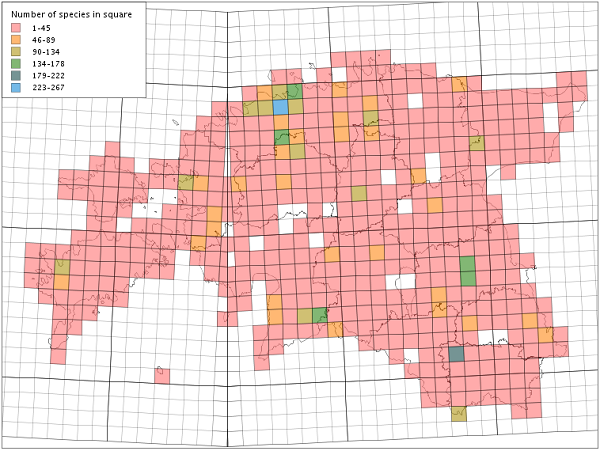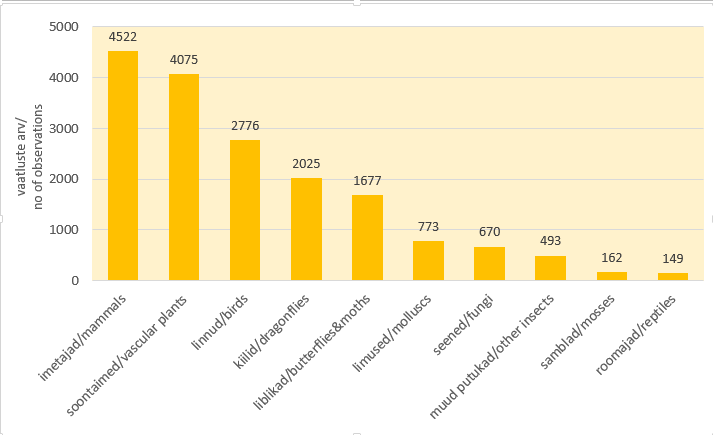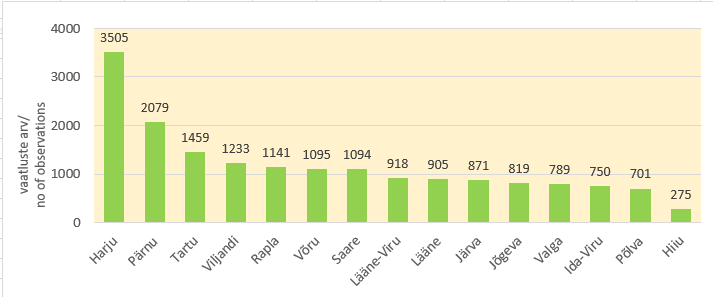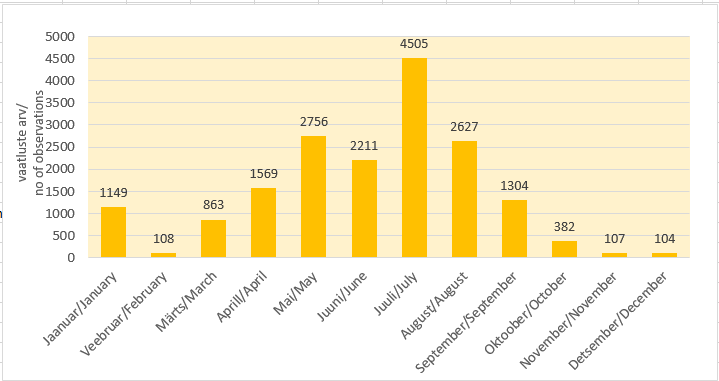Report of database usage in 2018
USING OF NATURE OBSERVATIONS DATABASE IN 2018
In 2018, users submitted 17,685 observations to the Nature
Observations Database. In addition there were over 5000 butterflies observations which entering was specialised ordered. Next statistics is for these 17,685 observations which were inserted voluntary. Next map shows distribution of inserted observations in 2018.

By groups of species inserted observations divided as
follow (here are only TOP 10 of species groups):
1) mammals - 4522 observations,
2) vascular plants - 4075 observations,
3) birds - 2776 observations,
4) dragonflies - 2025 observations,
5) butterflies/moths - 1677 observations,
6) molluscs - 773 observations;
7) fungi - 670 observations,
8) other insects except butterflies, moths and dragonflies - 493 observations,
9) mosses - 162 observations,
10) reptiles - 149 observations.

The most popular species which observations were entered were: Eptesicus nilssonii - 1138 observations, Myotis daubentonii - 630 observations, Pipistrellus nathusii - 472 observations, Vulpes vulpes - 321 observations, Capreolus capreolus - 302 observations, Alces alces - 288 observations, Myotis dasycneme - 165 observations, Enallagma cyathigerum - 159 observations, Unio crassus - 156 observations and Nyctalus noctula - 136 observations.
Summary observations of 1986 species were entered during the year.
Observations of species, which are under nature
conservation in Estonia, were entered 5792 : 139 of these were observations of species under protection category I, 3529 under protection category II and 2124 under protection category III.
397 persons entered their observations to the Nature
Observations Database in 2018. 256 of them inserted three or more
observations, 170 of them inserted more than 10 observations and 40 of them inserted more than 100 observations. One person entered even more than 1000 observations.
By county: users entered more than 1000 observations to
the Nature Observations Database from 7 counties. First was Harju (3505). Followed Pärnu (2079), Tartu (1459), Viljandi (1233), Rapla (1141), Võru (1095) and Saare (1094).

Observations submitted to the database were more frequent
in July (4505 observations). It was 25% of observations.
